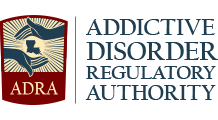Understanding the signs, symptoms, and effects of bipolar disorder is an important part of the effort to get treatment for your child. At Acadiana Treatment Center in Sunset, Louisiana, we’re proud to be a source of information and comprehensive care for adolescents who have been struggling with bipolar disorder.
Understanding Bipolar Disorder
Learn about bipolar disorder
Bipolar disorder is a mental health condition that causes significant changes in mood, confidence, energy, and related characteristics. Symptoms of bipolar disorder most commonly become apparent among individuals who are in their mid-20s, but children and adolescents can also struggle with this disorder.
The symptomatic fluctuations of bipolar disorder are described as major depressive episodes, manic episodes, and hypomanic episodes:
- During major depressive episodes, adolescents will experience symptoms such as profound sadness, diminished energy, lack of motivation, and low self-esteem.
- During manic episodes, adolescents will experience significant increases in mood and energy, increased self-esteem to the point of grandiosity, and heightened motivation.
- Hypomanic episodes are similar to manic episodes, but the symptoms an adolescent experiences will be less intense and shorter in duration.
Bipolar disorder is actually a general term. According to the fifth edition of the Diagnostic and Statistical Manual of Mental Disorders (DSM-5), there are multiple forms of bipolar disorder, including the following:
- Bipolar I disorder: Adolescents who have bipolar I disorder will experience manic episodes that last for a period of at least seven days. They may or may not also have major depressive episodes and hypomanic episodes, but neither type of episode is required for an adolescent to meet the clinical criteria for a diagnosis of bipolar I disorder.
- Bipolar II disorder: Adolescents who have bipolar II disorder will have one or more major depressive episodes and at least one hypomanic episode.
- Cyclothymic disorder: Adolescents who have cyclothymic disorder will have symptoms of depression and symptoms of hypomania on multiple occasions over a period of at least two years. However, these symptoms will not rise to the level that would qualify them as major depressive episodes or hypomanic episodes.
If you believe that your child may be experiencing the signs and symptoms of bipolar disorder, seek effective care from a qualified professional. Bipolar disorders are treatable conditions. To be sure your child gets the right type and level of care, get a thorough assessment and an accurate diagnosis from a qualified healthcare provider or treatment center.
Statistics
Statistics about bipolar disorder
The following statistics about bipolar disorder among adolescents were reported by the National Institutes of Health (NIH) and the National Institute of Mental Health (NIMH):
- Bipolar disorder affects about 9% of adolescents ages 13-18.
- Among adolescents, the rate of bipolar disorder is highest (4.3%) within the 17-18 age group.
- The rate of bipolar disorder is higher among adolescent girls (3.3%) than among adolescent boys (2.6%).
- Experts estimate that 25%-60% of individuals who have bipolar disorder will attempt suicide at least once.
- The life expectancy of individuals who have been diagnosed with bipolar disorder is 10-12 years less than that of individuals who do not have the disorder.
Causes & Risk Factors
Causes and risk factors for bipolar disorder
An adolescent’s risk for developing bipolar disorder can be influenced by several genetic and environmental factors. The following are among the more common risk factors for bipolar disorder:
- Gender (bipolar disorder is less common among adolescent boys than among adolescent girls)
- Living in a high-income country
- Family history of mental illness (the likelihood increases when first-degree relatives, such as parents or siblings, have schizophrenia or bipolar disorder)
Signs & Symptoms
Symptoms of bipolar disorder
The signs and symptoms of bipolar disorder can vary significantly from one adolescent to the next. The type of bipolar disorder an adolescent develops, the adolescent’s age and developmental level, and the presence of co-occurring disorders are among the many factors that can influence the nature and severity of bipolar disorder symptoms.
The following are among the more common signs and symptoms that an adolescent who has bipolar disorder may experience:
Symptoms of manic or hypomanic episodes:
- Elevated mood
- Heightened self-confidence
- Racing thoughts
- Talkativeness, including rapid speech patterns
- Increase in motivation and energy
- Little or no apparent need for sleep
- Jumpiness and restlessness
- Acting impulsively or recklessly
- Excessive behaviors (such as shopping sprees, sexual episodes, or foolish financial investments)
- Inability to remain focused on one task or idea
Symptoms of major depressive episodes:
- Pervasive sadness
- Low self-esteem and diminished sense of self-worth
- Fatigue
- Hypersomnia
- Significant unintentional weight loss or gain
- Loss of interest in significant activities
- Memory problems
- Sense of shame, guilt, and worthlessness
- Recurrent intrusive thoughts of death
- Loss of hope for the future
- Self-harm
- Suicidal ideation
- Suicidal behaviors
Effects
Effects of bipolar disorder
Much like with the signs and symptoms of bipolar disorder, the effects can vary considerably from one adolescent to another. The following are among the more common potential effects that may occur when an adolescent needs, but does not receive, effective professional care for bipolar disorder:
- Family discord
- Strained or ruined relationships with friends and peers
- Academic setbacks and behavioral problems in school
- Problems getting or keeping a job
- Physical injuries due to impulsive or reckless behaviors
- Arrest and incarceration due to impulsive or reckless behaviors
- Diminished capacity for self-care
- Medical problems due to poor eating habits and insufficient self-care
- Substance abuse and addiction
- Onset or worsening of co-occurring mental health disorders
- Social withdrawal or ostracization
- Isolation
- Self-harm
- Suicidal thoughts and actions
Please note that this is not a comprehensive list of all possible effects of bipolar disorder. Also, not every adolescent who develops bipolar disorder will experience every effect listed here. A variety of factors can influence the impact of bipolar disorder. However, it is extremely important to acknowledge the significant damage that these effects can have on a young person’s life.
If your child has been demonstrating any effects of bipolar disorder, seek professional help. With the right type and level of assistance, your child can minimize their risk for future effects of bipolar disorder and begin to heal from past harm.
Co-Occurring Disorders
Common co-occurring disorders among adolescents who have bipolar disorder
Adolescents who struggle with bipolar disorder may have an increased risk for developing certain additional mental or behavioral disorders. Clinicians refer to the simultaneous presence of multiple concerns as “co-occurring disorders.” The following are among the more common co-occurring disorders that can impact adolescents who have bipolar disorder:
- Substance use disorders (this is the clinical term for addiction)
- Attention-deficit/hyperactivity disorder (ADHD)
- Anxiety disorders
- Posttraumatic stress disorder (PTSD)
- Intermittent explosive disorder (IED)
The onset of co-occurring disorders does not always occur in the same order. In some cases, adolescents first experience the symptoms of bipolar disorder, followed by the onset of the co-occurring disorder. Other adolescents first show signs of one of the disorders listed above, then begin to struggle with the symptoms of bipolar disorder. And still other adolescents develop bipolar disorder but don’t experience any of the co-occurring disorders listed in this section.
The potential presence of co-occurring disorders is one of the many reasons why it’s so important for your child to complete a thorough assessment, receive an accurate diagnosis, and get comprehensive help from qualified professionals at a reputable center.













